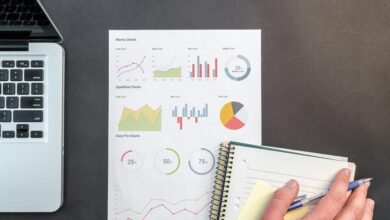840320014 Call Efficiency Benchmarking

Call efficiency benchmarking, particularly for identifier 840320014, serves as a vital tool for assessing call center performance. By examining key performance indicators such as call volume and response times, organizations can uncover areas needing improvement. This analysis not only informs resource allocation but also impacts customer satisfaction and financial outcomes. However, the methods employed in this benchmarking process merit further exploration to fully understand their implications and potential for enhancement.
Understanding Call Efficiency Benchmarking
Although call efficiency benchmarking may seem straightforward, it encompasses a range of metrics and methodologies designed to assess and enhance the performance of call centers.
Key factors include call volume and customer satisfaction, which interact to inform operational strategies. By analyzing these metrics, organizations can identify strengths and weaknesses, ultimately aiming to optimize service delivery while ensuring that customer needs are effectively met.
Key Performance Indicators for Call Efficiency
While various metrics can influence call efficiency, key performance indicators (KPIs) serve as essential tools for measuring the effectiveness of call center operations.
Critical KPIs include call volume and response time, which provide insights into workload management and customer satisfaction.
Benefits of Implementing Call Efficiency Metrics
Implementing call efficiency metrics offers organizations a structured approach to enhance operational performance and customer experiences.
These metrics facilitate cost reduction by identifying inefficiencies in call handling processes, allowing for resource optimization. Furthermore, they contribute to improved customer satisfaction by ensuring timely and effective responses to inquiries.
Ultimately, leveraging these metrics positions organizations to achieve both financial and service excellence in a competitive landscape.
Strategies for Enhancing Call Handling Processes
Enhancing call handling processes requires a multifaceted approach that integrates technology, training, and performance analysis.
Effective call routing systems minimize wait times and ensure customers reach the appropriate agents. Concurrently, robust agent training programs equip representatives with necessary skills, fostering efficiency and customer satisfaction.
Regular performance analysis further identifies areas for improvement, creating a continuous feedback loop that optimizes call handling practices.
Conclusion
In conclusion, the meticulous assessment of call efficiency benchmarking, particularly for identifier 840320014, is akin to fine-tuning a vintage car—every detail matters for optimal performance. By focusing on key performance indicators and implementing targeted strategies, organizations can significantly enhance their call handling processes. This analytical approach not only leads to improved customer satisfaction but also fosters a more efficient allocation of resources, ultimately driving financial success in an increasingly competitive landscape.




